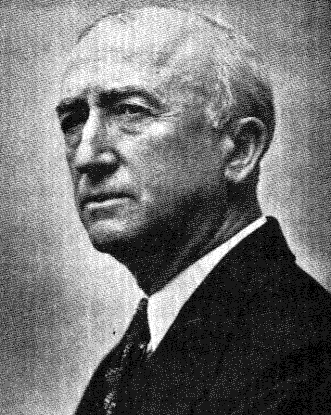
“My belief is that it is the duty of a judge to declare what is the law and not what he thinks the law should be.” – James F. Byrnes
President Roosevelt appointed Senator Byrnes to the United States Supreme Court, where he was sworn in on July 7, 1941. Byrnes left his Senatorial position to join one of the youngest courts ever, the average age of its members being only 57. Political writers reported that the justices also made up the friendliest Court ever, and Byrnes himself stated, “I had known all the members of the Court before my appointment; most of them I knew intimately, and they quickly made me feel at home.”
Although Byrnes’ time on the Court was brief, he managed to influence several Supreme Court decisions. Byrnes wrote approximately 16 decisions during his one year, three-month term as an associate justice and was often elected to write the formal opinion of a group of allied Court members.
Byrnes believed the Court had certain responsibilities as a functioning branch of the government. He felt strongly that the purpose of the Supreme Court was to interpret the laws and not to make them. Furthermore, he emphasized that where there was doubt about the meaning of the language of a statute, the Court should review the original intent by referring to the reports of the legislative committees. He believed that the duty of a judge is to declare what is the law and not to substitute his personal beliefs for those of the Congress and the President who approved the bill.
Byrnes believed a well-balanced Court should consist of members with various legal experiences (predominantly judicial) and should include one or two members with state court experience. He thought it beneficial to appoint one or two lawyers who had served in Congress and had training in drafting laws.
While serving on the Court, Byrnes worked closely with President Roosevelt in discussing emergency war legislation and planning executive orders to be issued. Attorney General Biddle reported to the President, “All defense legislation is being cleared by the departments and then through Jimmy Byrnes, who takes it to the Hill.” Byrnes worked with Biddle on the Second War Powers Act, which offered immediate funding to the war effort.
On October 3, 1942, President Roosevelt requested that Byrnes take a leave of absence from the Supreme Court in order to serve as the Director of Economic Stabilization. Byrnes resigned, however, in order to prevent the appearance of a conflict of interest between the judicial and executive branches of government. Leaving behind the associates, security and prestige of the Supreme Court, Byrnes insisted that he wished to serve wherever the President deemed he could serve best.
